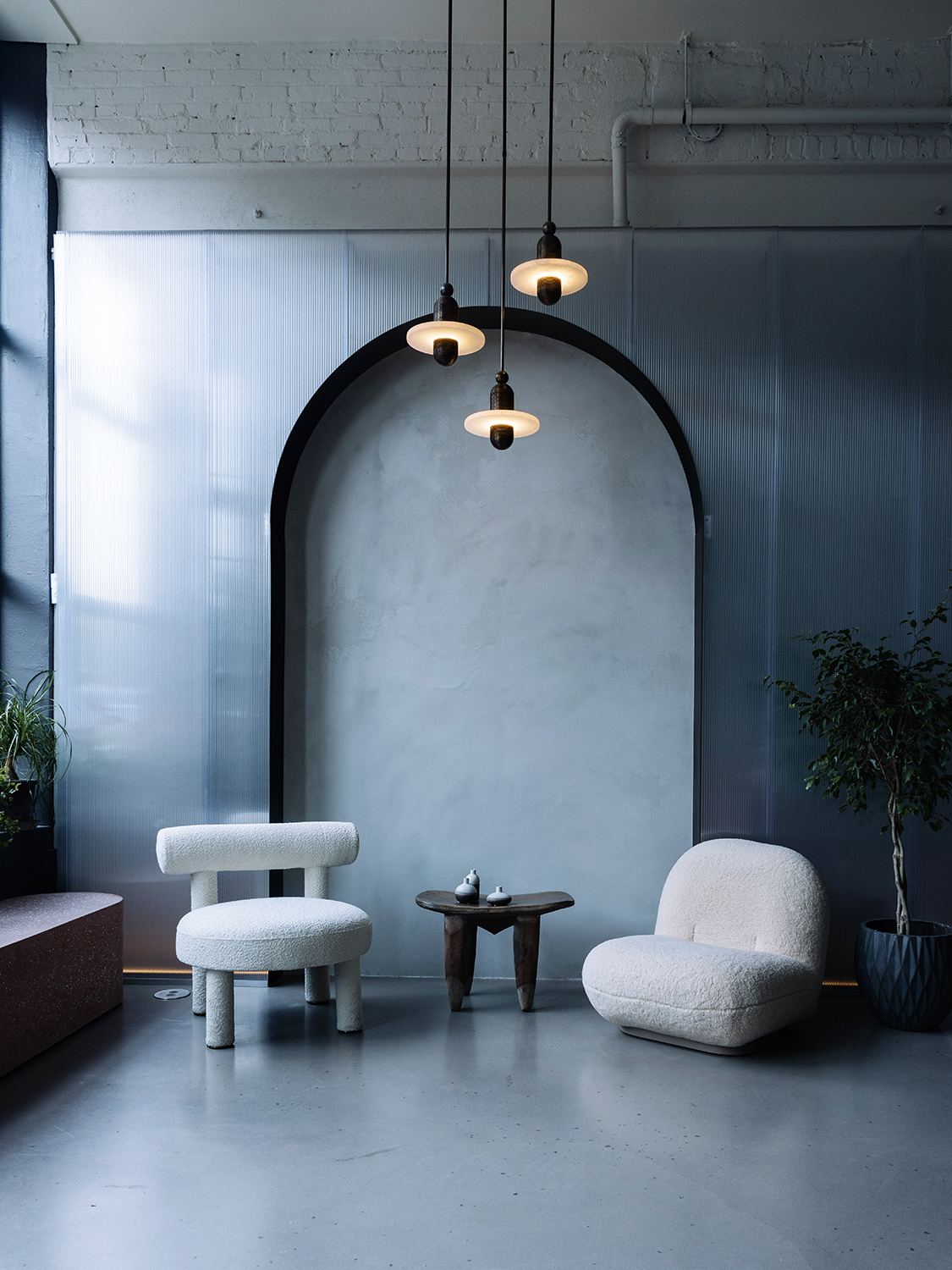We may earn revenue from the products available on this page and participate in affiliate programs.
Eva Karabudak is known around the globe for the otherworldly landscapes she creates…on people’s skin. What started as murals back in her home country of Turkey have since become permanent pieces of art on celebrities like Sam Smith, SZA, and Joe Jonas. The tattoo artist’s work is full of circular vignettes that peek into alternate dimensions, and her new Williamsburg, Brooklyn, studio, Atelier Eva, offers more of the same. Upon arrival, clients step into a realm that Karabudak calls her secret garden—a 115-foot-deep space that isn’t like any tattoo studio you’ve seen.

For example, you won’t find stark overhead lighting or metal music in the background here. Karabudak wanted the space to be a serene environment (there’s always a custom gardenia candle burning and curated playlist on), but the design brief was, well, brief. “All she wanted were mono lights from Apparatus and a water feature,” says Alp Bozkurt, a longtime friend of Karabudak’s and the lead architect on the project. “We bought those lights before we even had keys to the place.”

Incorporating the lights into the design was the least of Bozkurt’s worries (for now). The bigger challenge was what to do with the shotgun layout—much like a railroad apartment—to give it some sense of flow. ”It’s exciting to walk into a place with these proportions, but I hate when I walk in and in that instant, I’ve seen it all,” he says. He knew he didn’t want to do walls, so he came up with other ways to add layers to the room, like with a drape of nickel-plated metal mesh suspended from the ceiling behind the reception desk. “It creates just enough privacy where you see the action, but you’re not in it,” he adds.

Behind the curtain lies a 14-foot pink terrazzo counter where Karabudak and her team draw up ideas with clients. The base is actually a concrete wall built into the foundation. “That table will be there long after that building,” Bozkurt says with a laugh. Because it’s a permanent fixture, it was essential to get it right—and yet, after about 10 men hauled in the top piece, Karabudak realized it was too narrow for the artists to comfortably sit and sketch across from each other. But Bozkurt had a solution: They wrapped the existing tabletop with a brass sheet and put a terrazzo trim around that to add a few inches. Now it looks like an intentional inlay and it’s the team’s favorite detail.

In other feats of cleverly disguised design, polycarbonate comes into play. Bozkurt’s team connected panels of corrugated plastic with punched-out 12-foot arches around the perimeter. Not only do they add visual interest—you can still peep the original brick walls through the cutouts, and 300 feet of LEDs along the bottom add ambience—but they hide the awkward electrical panels and plumbing pipes.
Then it was time to install those must-have mono lights. The only problem was, the arches were supposed to be a foot taller, so now they no longer lined up properly with the pendants. The remedy was reinstalling them with longer rods. Now that Karabudak had her lights just right, Bozkurt could turn his attention to his own design obsession: an original Togo sofa for the lobby. “I just couldn’t picture something with a wood or steel frame,” he says. “It had to be something blobby.” They were able to source a vintage one from Renew Finds, a secondhand shop in Greenpoint.


On the opposite wall, a mirrored archway offers clients a place to check out their fresh ink. To make the mirror appear set back into the wall, they had to add an arc of new brick around the edge, and now it’s Karabudak’s favorite detail in the whole space, probably because she personally chiseled away bits of the material to make it look as weathered as the 200-year-old original blocks.

Karabudak’s other requirement, the water feature, turned out to be a labor of love. When they started to price out custom fountains, they were shocked by the numbers, so they decided to make their own. They called in the same metalworker who fabricated the trims on the arches to build a steel trough, which they set inside a tub of terrazzo and surrounded with greenery, and then added two water pumps on either side to create the babbling brook effect Karabudak was going for. “It’s kind of become its own little habitat,” Bozkurt says.
Now as people walk past the studio, Karabudak says she often notices them snapping a pic of the space. The design is eye-catching, of course, but the focus was never solely on aesthetics. It’s not just a cool place to get a tattoo; Karabudak created a conduit for the artists within to introduce clients to a whole new dimension.
